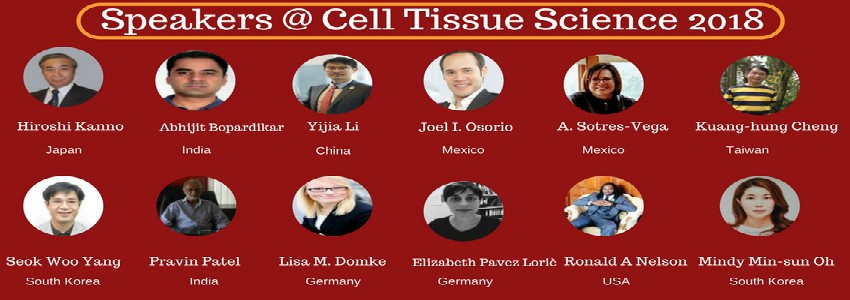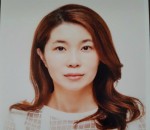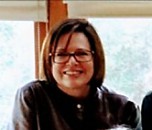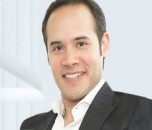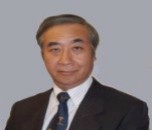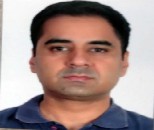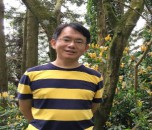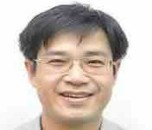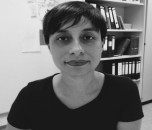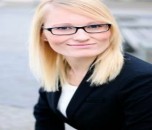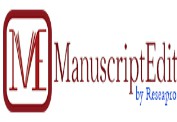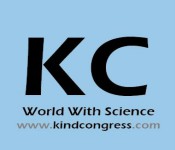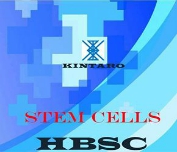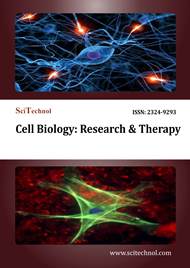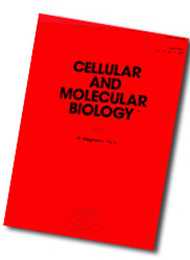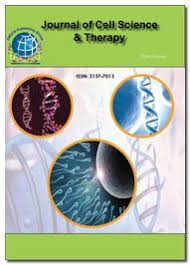Theme: Advancement and Challenges Long-Held on Cell and Tissue Science
Venue:Radisson Narita,650-35 Nanae,Tomisato-Shi,Chiba, Japan
CellTissueScience 2018
Conference Series LLC LTD extends warm invitation to all the participants across the globe to attend 11th World Conference on Cell and Tissue Science which is going to be held during May 09-10, 2018 at Tokyo, Japan which includes prompt keynote presentations, Oral talks, Poster presentations and Exhibitions working on stem cells, cell therapy, organ regeneration, tissue engineering and regenerative medicine to discuss materials-related strategies for disease remediation and tissue repair. Cartilage Tissue Engineering, Tooth regeneration, Biological tissue substitution, organ regeneration, tissue regeneration and care a special focus along with applying basic science and engineering principles from diverse areas towards solving clinically relevant biomedical problems.
Conference Series LLC Ltd Organizes 300+ conferences, 500+workshops and 200+symposiums on Clinical, Medicine, Pharmacy and Science and Technology every year across USA, Europe, Asia, Middle East, Australia and UK with support from 1000 more scientific societies and Publishes 500 open access journals which contains over 30000 eminent personalities, reputed scientists as editorial board members.
We welcome you to Cell Tissue Science 2018 going to be held on May 09-10, 2018 in Tokyo, Japan. This conference presents information regarding cutting-edge developments in all areas of tissue engineering, stem cell research, regenerative medicine, tissue culture and tissue preservation research including the biology, medicine, applications, and regulations of cell and tissues. Topics of discussion include recent developments in pre-clinical and clinical trials of cell and tissue therapy, regenerative medicine and tissue engineering, cancer stem cells, immunotherapy, cell regeneration, organ regeneration, Tissue preservation and dental stem cells.
After the success of the 6th International Conference and Exhibition on Cell Therapy and Gene Therapy in 2017, it is time once again for the Cell and Tissue Science community to come together and this time look forward to the next 10 years of commercial successes within these two sectors.
The World Conference on Cell and Tissue Science has traditionally focused on developing the commercial aspects of tissue science research, with the addition of innovation within stem cells, regenerative medicine, tissue engineering, notably organ regeneration and personalized medicines.
Now after cell therapy, tissue engineering and regenerative medicine therapies have made it to market, it is very important, for the success of these sectors, to move forward and include new projects and innovations that are coming out of researchers and universities spin-outs. These will be both new developments in regenerative medicine research but also within the use of tissue engineering and stem cells for drug discovery and organ regeneration.
Alongside the stem cells content, there is an increasing amount of demand for other forms of regeneration in organ and medicines as well as personalized medicines. So, the Cell and Tissue Science conference will move to include more commercial opportunities within the field of cell and tissue engineering: organ regeneration, tissue substitution, and tissue preservation and translational medicines.
Last 5 years of Cell Tissue Science Conference has built up a reputation for delivering high-level commercial content and bringing together the senior executives and thought-leaders within the space.
Track 1: Cell Therapy
Cell therapy is therapy during which cellular material is injected into a patient. Nowadays 2 distinct classes of cell therapy are: the first class is cell therapy in mainstream drugs. This is often the topic of intense research and the basis of potential therapeutic benefit. The second class is in alternative medicine and perpetuates the practice of injecting animal materials to cure disease. The target of cell therapy is to revive the lost function instead of manufacturing a brand-new organ that may cause duplicity and undesirable effects. Gene therapy is that the therapeutic delivery of nucleic acid polymers into a patient's cells as a drug to treat disease. Gene therapy may be a way to fix a genetic drawback at its supply. The polymers are either translated into proteins, interfere with target gene expression, or presumably correct genetic mutations. The foremost common kind uses a deoxyribonucleic acid that encodes a useful, therapeutic gene to exchange a mutated gene. The compound molecule is packaged along with a "vector” that carries the molecule within cells. The vector incorporates genes into chromosomes. The expressed nucleases then knock out and replace genes within the body. These therapies have had good results, though the deficiency of the beginning material could represent a significant limitation.
Related Conference:
12th Annual Conference on Stem Cell and Regenerative Medicine, June 04-06, 2018 Prague, Czech Republic; 3rd International Conference on Dual Diagnosis & Addiction Therapy, June 14-16, 2018 Amsterdam, Netherlands; International Conference on Psychotherapy and Psychological Disorders, July 11-12, 2018 Toronto, Ontario, Canada;2nd Annual Summit on Cell Therapy and Stem Cell Research November 9-10, 2018 Atlanta, Georgia, USA; 9th World Congress on Breast Cancer & Therapy Nov 25-26, 2018,UK and USA; 7th International Conference and Exhibition on Cell Therapy and Gene Therapy March 15-16, 2018 London, UK;
SCRM Conferences | Cell Therapy Conferences | Dual-diagnosis & Addiction Therapy Conferences | Psychotherapy Conferences | Cell Therapy & Stem Cell Research Conferences | Global Breast Cancer Conferences
Track 2: Gene Therapy
Gene therapy is designed to introduce genetic material into cells to compensate for abnormal genes and to form a beneficial protein. If a mutated gene causes a necessary protein to be faulty or missing or misfunctioned, gene therapy could also be introduced with a normal copy of the gene to restore the function of the protein. Researchers usually do that employing a virus to hold the genetic cargo into cells, as a result of that’s what viruses evolved to do with their own genetic material. In the future, this technique could permit doctors to treat a disorder by inserting a gene into a patient’s cells rather than using medicine or surgery.
Related Conference:
7th International Conference and Exhibition on Cell and Gene Therapy March 15-16, 2018 London, UK; 2nd Annual Summit on Cell Therapy and Stem Cell Research November 9-10, 2018 Atlanta, Georgia, USA; 2nd Annual Summit on Cell Therapy and Regenerative Medicine November 9-10, 2018 Atlanta, Georgia, USA; 12th Annual Conference on Stem Cell and Regenerative Medicine, June 04-06, 2018 Prague, Czech Republic; 11th World Congress on Cell & Tissue Science May 09-10, 2018 Tokyo, Japan;
Cell Therapy Conferences | Cell Therapy & Stem Cell Research Conferences | Regenerative Medicine Conferences | SCRM Conferences | Cell Tissue Science Conferences
Track 3: Cell Engineering
Cellular Engineering applies the principles and methods of engineering to the problems of the cell and molecular biology. As biomedical engineering has shifted from the organ and tissue level to the cellular and sub-cellular level, cellular engineering has emerged as a brand-new field. A cornerstone of much of this activity is cell culture technology, i.e., the ability to grow living cells within the artificial environment of a laboratory. Cellular engineering includes the role of engineering in both basic cell biology research and within the creating of products that use living cells, e.g., tissue engineering and bioprocess engineering.
Related Conference:
13th International Conference on Tissue Engineering and Regenerative Medicine July 12-13, 2018 Paris, France; 11th International Conference on Tissue Engineering & Regenerative Medicine October 18-20, 2018 Rome, Italy; 2nd Annual Summit on Cell Therapy and Stem Cell Research November 9-10, 2018 Atlanta, Georgia, USA; 2nd Annual Summit on Cell Therapy and Regenerative Medicine November 9-10, 2018 Atlanta, Georgia, USA; 10th World Congress and Expo on Cell & Stem Cell Research March 19-21, 2018 New York, USA;
TERM Conferences | Regenerative Medicine Conferences | Cell Therapy & Stem Cell Research Conferences | Stem Cell Research Conferences
Track 4: Organ Engineering
This interdisciplinary engineering that has attracted a lot of attention as a brand new therapeutic implies that might overcome the drawbacks involved in the current artificial organs and organ transplantation that have been also aiming at replacing lost or severely damaged tissues or organs. Tissue engineering and regenerative medicine is an exciting research area that aims at regenerative alternatives to harvested tissues for organ transplantation with soft tissues. Though significant progress has been created within the tissue engineering field, several challenges remain and any development in this area would require on-going interactions and collaborations among the scientists from multiple disciplines, and in partnership with the regulatory and therefore the funding agencies. Because of the medical and market potential, there's important academic and corporate interest during this technology.
Related Conference:
2nd Annual Summit on Cell Therapy and Stem Cell Research November 9-10, 2018 Atlanta, Georgia, USA; 9th International Conference and Exhibition on Tissue Engineering and Biobanking April 23-24, 2018 Las Vegas, USA; 9th International Conference & Exhibition on Tissue Science & Regenerative Medicine April 23-24, 2018 Las Vegas, USA; 13th International Conference on Tissue Engineering and Regenerative Medicine July 12-13, 2018 Paris, France; 10th World Congress and Expo on Cell & Stem Cell Research March 19-21, 2018 New York, USA;
Cell Therapy & Stem Cell Research Conferences | Biobanking Conferences | Tissue Conferences | TERM Conferences | Stem Cell Research Conferences
Track 5: Tissue Engineering
Tissue engineering is an attempt, technique, or technology made or at some point applied towards the preternatural generation, regeneration, or restoration of native tissue structure and function using biological components. Once categorized as a sub-field, due to the scope and importance it has been considered as a field in its own.
The goal of tissue engineering is to functional constructs that restore, replace, or improve damaged or wounded tissues or organs. Artificial skin and cartilage are good examples for tissues engineering that have been approved by the FDA. For proper functioning of these tissues certain requirement is needed like mechanical and structural properties.
Regenerative medicine is a broad field that includes tissue engineering but also incorporates research on self-healing where the body uses its own systems or with the help of foreign biological material to recreate cells and reconstruct into tissues and organs.
Related Conference:
World Congress on Stem Cell Biology and Biobanking September 3-4, 2018 Tokyo, Japan; 9th International Conference and Exhibition on Tissue Engineering and Biobanking April 23-24, 2018 Las Vegas, USA; 9th International Conference & Exhibition on Tissue Science & Regenerative Medicine April 23-24, 2018 Las Vegas, USA; 9th International Conference on Tissue Science and Regenerative Medicine July 13-14, 2018 Sydney, Australia; 12th International Conference on Tissue Engineering and Regenerative Medicine November 9-10 , 2018 Atlanta, Georgia ,USA; 12th International Conference & Exhibition on Tissue Preservation and Biobanking November 9-10, 2018 Atlanta, USA;
Biobanking Conferences | Stem Cell Biology Conferences | Tissue Conferences | Tissue Science Congress Conferences | Tissue Science Conferences
Track 6: Bone and Cartilage Tissue Engineering
Tissue engineering of musculoskeletal tissues, notably bone and cartilage, may be a rapidly advancing field. In bone, technology has focused on bone graft substitute materials and also the development of biodegradable scaffolds. Recently, tissue engineering strategies have included cell and gene therapy. The availability of growth factors and the expanding knowledge base concerning the genetics and regulation of bone formation have generated new materials for tissue engineering applications. This information base also has benefited cartilage tissue engineering. The problems are more complex, however, and the solutions appear more elusive. Advances in scaffold design and cell culture have improved the prognosis for success.
Related Conference:
9th International Conference and Exhibition on Tissue Engineering and Biobanking April 23-24, 2018 Las Vegas, USA; 9th International Conference on Tissue Science and Regenerative Medicine July 13-14, 2018 Sydney, Australia; 12th International Conference on Tissue Engineering and Regenerative Medicine November 9-10, 2018 Atlanta, Georgia, USA;10th World Congress and Expo on Cell & Stem Cell Research March 19-21, 2018 New York, USA; 12th Annual Conference on Stem Cell and Regenerative Medicine June 04-06, 2018 Prague, Czech Republic; 11th Annual Conference on Stem Cell and Regenerative Medicine July 19-20, 2018 Dubai, UAE;
Tissue Science Congress Conferences | Biobanking Conferences | Tissue Science Conferences | Stem Cell Research Conferences | SCRM Conferences | Stem Regenerative Conferences
Track 7: Biological Tissue Substitutes
Tissue substitutes are a heterogeneous group of wound coverage materials that aid in wound closure and replace the functions of the tissue, either temporarily or permanently, depending on the product characteristics. These substances are alternatives to the standard wound coverage in circumstances when standard therapies are not desirable.
Related Conference:
4th International Conference on Wound Care, Tissue Repair & Regenerative Medicine October 5-6, 2018 Los Angeles, USA;11th International Conference on Tissue Engineering and Regenerative Medicine October 18-20, 2018 Rome, Italy; 12th International Conference & Exhibition on Tissue Preservation and Biobanking November 9-10, 2018 Atlanta, USA; 9th International Conference on Tissue Science and Regenerative Medicine July 13-14, 2018 Sydney, Australia;
Regenerative Medicine Conferences | Woundcare Conferences | Biobanking Conferences | Tissue Science Congress Conferences
Track 8: Biomaterials and Bioengineering
Biomaterials are being employed for the health care applications from ancient times. However subsequent evolution has made them a lot of versatile and has multiplied their utility. Biomaterials have revolutionized the areas like bioengineering and tissue engineering for the development of novel methods to combat life-threatening diseases. Alongside biomaterials, stem cell technology is additionally getting used to enhance the present aid facilities.
Related Conference:
3rd Annual Conference and Expo on Biomaterials March 05-06, 2018 Berlin, Germany; 4th Annual Conference on Biomaterials June 04-06, 2018 Prague, Czech Republic; 11th World Congress on Cell and Tissue Science May 09-10, 2018 Tokyo, Japan; 5th International summit on Medical Biology & Bioengineering September 27-28, 2017 Chicago, USA;
Biomaterials Conferences | Euro Biomaterials Conferences | Cell Tissue Science Conferences | Bioengineering Conferences
Track 9: Tissue Culture & Preservation
Tissue culture is a technique of scientific research during which fragments of tissue from an animal or plant are collected and transferred to artificial surroundings in which they can survive and function. The cultured tissue may consist of a single cell, a population of cells, or a part of an organ. Cells culture could multiply, change size, form, or function, exhibit specialized activity or interact with different cells. Cryopreservation is a process where organelles, cells, tissues, extracellular matrix, organs or any other biological constructs vulnerable to damage caused by unregulated chemical kinetics are preserved by cooling to very low temperatures.
Related Conference:
12th International Conference & Exhibition on Tissue Preservation and Biobanking November 9-10, 2018 Atlanta, USA; 12th Annual Conference on Stem Cell and Regenerative Medicine, June 04-06, 2018 Prague, Czech Republic; 27th International Conference on Oncology Research & Cancer Stem Cells May 10-12, 2018 Frankfurt, Germany; 9th International Conference on Tissue Science and Regenerative Medicine July 13-14, 2018 Sydney, Australia; 12th International Conference on Tissue Engineering and Regenerative Medicine November 9-10 , 2018 Atlanta, Georgia ,USA;
SCRM Conferences | Biobanking Conferences | Oncology Research Conferences | Tissue Science Congress Conferences | Tissue Science Conferences
Track 10: Tissue Repair and Regeneration
Regeneration is that the progression of renewal, regeneration, and growth that makes it cells, organ regeneration to natural changes or events that cause damage or disturbance. This study is carried out as craniofacial tissue engineering, in-situ tissue regeneration, adipose-derived stem cells for tissue science which is also a breakthrough in cell culture technology. The study isn't stopped with the regeneration of tissue wherever it is further carried out in relation with cell signaling, morphogenetic proteins. Most of the neurological disorders occurred accidentally having a scope of recovery by replacement or repair of intervertebral discs repair, spinal fusion and plenty of more advancement.
Related Conference:
9th International Conference on Tissue Science and Regenerative Medicine July 13-14, 2018 Sydney, Australia; 12th International Conference on Tissue Engineering and Regenerative Medicine November 9-10 , 2018 Atlanta, Georgia ,USA; 4th International Conference on Wound Care, Tissue Repair & Regenerative Medicine October 5-6, 2018 Los Angeles, USA; 12th International Conference & Exhibition on Tissue Preservation and Biobanking November 9-10, 2018 Atlanta, USA; 11th World Congress on Cell & Tissue Science May 09-10, 2018 Tokyo, Japan;
Tissue Science Congress Conferences | Tissue Science Conferences | Woundcare Conferences | Biobanking Conferences | Cell Tissue Science Conferences
Track 11: Bio-banking
The wide array of bio specimens (including blood, saliva, plasma, and pure DNA) maintained in biobanks is delineating as libraries of the human organism. They’re rigorously characterized to see the final and distinctive options of the continual cell line and therefore the absence or presence of contaminants, thus establishing a basic understanding regarding the staple from that the biological product is being derived and maintained. Biobanks catalog specimen’s victimization genetic and alternative traits, like age, gender, blood type, and quality. Some samples are classified in line with environmental factors, like whether or not the donor had been exposed to radiation or another substance that may have an effect on human genes. Researchers access bio-banks once they are in need of specimen with similar traits for their research studies.
Related Conference:
World Congress on Stem Cell Biology and Biobanking September 3-4, 2018 Tokyo, Japan; 9th International Conference and Exhibition on Tissue Engineering and Biobanking April 23-24, 2018 Las Vegas, USA; 12th International Conference & Exhibition on Tissue Preservation and Biobanking November 9-10, 2018 Atlanta, USA; 12th Annual Conference on Stem Cell and Regenerative Medicine, June 04-06, 2018 Prague, Czech Republic;
Stem Cell Biology Conferences | Biobanking Conferences | SCRM Conferences
Track 12: Epigenome and Epigenetic Analysis
The epigenome is a multitude of chemical compounds that tells the genome what to do. The complete assembly of human genome is about 3 billion base pairs of DNA that makes each of the individual unique. DNA holds the instructions for building the proteins that carry out different functions in a cell. The epigenome is made up of chemical compounds and proteins that can attach to DNA and direct such actions as turning genes on or off, controlling the production of proteins in particular cells.
Related Conference:
2nd International Conference on Cancer Genetics and Epigenetics July 18-19, 2018 Sydney, Australia; 4th International Congress on Epigenetics & Chromatin September 03-05, 2018 London, UK;
Epigenetics and Cancer Conferences | Epigenetics Conferences
Track 13: Cancer Cell Biology
Tumor, a mass of abnormal tissue that arises without perceived cause from preexisting body cells that has no purposeful function and is characterized by a tendency to independent and restricted growth. Tumor is quite different from inflammatory and other swellings because the cells in tumors are quite abnormal in appearance and functional characteristics. Abnormal cells are the kind that generally makes up tumors. One or more alterations in the normal cells can lead to tumor cells like (1) Hypertrophy, an increase in the size of individual cells. (2) Hyperplasia, an increase in the number of cells within a given zone and in some instances, it may constitute into tumor formation. (3) Anaplasia, a regression of the physical characteristics of a cell toward a more primitive undifferentiated type.
Related Conference:
27th International Conference on Oncology Research & Cancer Stem Cells May 10-12, 2018 Frankfurt, Germany; 26th Annual Congress on Cancer Science and Therapy October 03-04, 2018 Los Angeles, California, USA; 3rd International Conference on Tumor & Cancer Immunology and Immunotherapy September 17-18, 2018 San Diego, USA; 18th International Conference on Cancer Research and Anticancer Therapies September 17-18, 2018 San Diego, USA;
Oncology Research Conferences | Cancer Therapy Conferences | Tumor & Cancer Immunology Conferences | Cancer Congress Conferences
Track 14: Future of Cancer Care
Cancer stem cells (CSCs) are cancer cells (found among tumors or hematological cancers) that possess characteristics related to traditional stem cells, specifically the flexibility to offer a rise to a variety of cells found during a specific cancer sample. CSCs are so tumorigenic (tumor-forming), perhaps in contrast to alternative non-tumorigenic cancer cells. CSCs might generate tumors through the stem cell processes of self-renewal and differentiation into multiple cell varieties. Such cells are hypothesized to persist in tumors as a distinct population and cause relapse and metastasis by giving rise to new tumors. Therefore, development of specific therapies targeted at CSCs holds hope for improvement of survival and quality of life of cancer patients, especially for patients with metastatic disease.
Related Conference:
26th Annual Congress on Cancer Science and Therapy October 03-04, 2018 Los Angeles, California, USA; 27th International Conference on Oncology Research & Cancer Stem Cells May 10-12, 2018 Frankfurt, Germany; 7th World Congress on Breast Cancer & Therapy May 25-26, 2018, Radisson Hotel JFK Airport, New York, USA; 2nd International Conference on Cancer Biology and Drug Delivery October 03-04, 2018 Los Angeles, California, USA; 2nd International Conference on Cancer Genetics and Epigenetics July 18-19, 2018 Sydney, Australia;
Cancer Therapy Conferences | Oncology Research Conferences | Breast Cancer Congress Conferences | Cancer Conferences | Epigenetics and Cancer Conferences
Track 15: Stem Cells
Stem cells have the exceptional potential to develop into many different cell types within the body throughout early life and growth. In addition to that, in several tissues they function a sort of internal repair system, dividing essentially without limit to refill different cells as long as the person or animal remains alive. Once a stem cell divides itself, and then each new cell has the potential either to stay as a stem cell or become another type of cell with an improved specialized function, such as a muscle cell, a red blood cell, or a nerve cell. Stem cells come from 2 main sources: embryonic stem cells, Embryos formed during the blastocyst phase of embryological development and adult stem cells. Both types are typically characterized by their efficiency, or potential to completely differentiate into different cell type.
Related Conference:
27th International Conference on Oncology Research & Cancer Stem Cells May 10-12, 2018 Frankfurt, Germany; 10th World Congress and Expo on Cell & Stem Cell Research March 19-21, 2018 New York, USA; 12th Annual Conference on Stem Cell and Regenerative Medicine June 04-06, 2018 Prague, Czech Republic; 11th Annual Conference on Stem Cell and Regenerative Medicine July 19-20, 2018 Dubai, UAE; 10th Annual Conference on Stem Cell and Regenerative Medicine August 13-14, 2018 London, UK; World Congress on Stem Cell Biology and Biobanking September 3-4, 2018 Tokyo, Japan; 2nd Annual Summit on Cell Therapy and Stem Cell Research November 9-10, 2018 Atlanta, Georgia, USA;
Oncology Research Conferences | Stem Cell Research Conferences | SCRM Conferences | Stem regenerative Conferences | Stem Cell Congress Conferences | Cell Therapy & Stem Cell Research Conferences
Track 16: Dental Stem Cells and Tooth Regeneration
Teeth are the foremost natural, noninvasive source of stem cells. Dental stem cells, that are straightforward, convenient, and reasonable to gather, hold promise for a variety of very potential therapeutic applications. Dental stem cells provide an awfully promising therapeutic approach to restoring structural defects and this idea is extensively explored by many researchers that are obvious by the speedily growing literature in this field.
Dental problems caused by dental caries, periodontal disease and tooth injury compromise the oral and general health issues. Current advances in the development of regenerative therapy have been influenced by our understanding of embryonic development, stem cell biology, and tissue engineering technology. Tooth regeneration is a field of regenerative medicine procedure within the field of tissue engineering and stem cell biology to exchange damaged or lost teeth by re-growing them from autologous stem cells.
Dental stem cells and cell-activating cytokines are thought to be candidate approach for tooth tissue regeneration as results of they have the potential to differentiate into tooth tissues in vitro and in vivo. Whole tooth replacement therapy is taken into consideration to be an attractive idea for next generation regenerative therapy as a type of bioengineered organ replacement.
Related Conference:
27th International Conference on Oncology Research & Cancer Stem Cells May 10-12, 2018 Frankfurt, Germany; 10th World Congress and Expo on Cell & Stem Cell Research March 19-21, 2018 New York, USA; 4th International Conference on Wound Care, Tissue Repair & Regenerative Medicine October 5-6, 2018 Los Angeles, USA; 12th International Conference & Exhibition on Tissue Preservation and Biobanking November 9-10, 2018 Atlanta, USA; 2nd Annual Summit on Cell Therapy and Stem Cell Research November 9-10, 2018 Atlanta, Georgia, USA;
Oncology Research Conferences | Stem Cell Research Conferences | Woundcare Conferences | Biobanking Conferences | Cell Therapy & Stem Cell Research Conferences
Track 17: Immunology
Immunology is the study of the immune system which is a very important part of the medical and biological sciences. The immune system protects us from infection through various lines of defense. If the immune system is not functioning as it should, it results in the form disease, such as autoimmunity, allergy and cancer.Immunotherapy could be a broad category of cancer therapies that use the body’s immune system to fight cancer cells. These cells are totally different from normal cells, in this, they don’t die normally. Consider these rapidly dividing cells like an out-of-control copy machine that won’t stop making images. These abnormal cells frequently modification, or “mutate,” to evade the immune system. Immunotherapy medicines that are designed to alert the immune system regarding these mutated cells so that it will find and destroy them. Immunotherapies are divided into 3 general categories: 1. Checkpoint Inhibitors are the disrupt signals that enable cancer cells to cover from an immune attack 2. Cytokines are the protein molecules that facilitate regulate and direct the immune system 3. Cancer vaccines that are used to each treat and stop cancer by targeting the immune system.
Related Conference:
3rd International Conference on Tumor & Cancer Immunology and Immunotherapy September 17-18, 2018 San Diego, USA; 9th Molecular Immunology & Immunogenetics Congress March 08-09, 2018 London, UK; World Congress on Allergy and Immunotherapy May 16-17, 2018 Osaka, Japan; Annual Congress on Immunology & Immunotechnology September 13-14, 2018 Zurich, Switzerland;
Tumor & Cancer Immunology Conferences | Molecular Immunology Conferences | Allergy Conferences | Annual Immunology Congress Conferences
Track 18: Anti-Aging and Regenerative medicine
Regenerative medicine is a branch of translational research in tissue engineering and molecular biology that deals with the "process of substitution, engineering or recreating human cells, tissues or organs to restore or establish normal functioning of cell”. Combinations of those approaches will amplify our natural healing process in the places it is required most, or take over the function of a permanently damaged organ. Regenerative medicine is a relatively new field that brings along consultants in biology, chemistry, engineering, engineering, genetics, medicine, robotics, and alternative fields to find out solutions to a number of the foremost difficult medical issues faced by human beings.
The promising field of regenerative medicine is working to restore structure and function of damaged tissues and organs. It’s also working to create solutions for organs that become permanently broken. The goal of this approach is to find out a way to cure previously untreatable injuries and diseases.
Related Conference:
12th Annual Conference on Stem Cell and Regenerative Medicine, June 04-06, 2018 Prague, Czech Republic; 2nd Annual Summit on Cell Therapy and Regenerative Medicine November 9-10, 2018 Atlanta, Georgia, USA; 9th International Conference & Exhibition on Tissue Science & Regenerative Medicine April 23-24, 2018 Las Vegas, USA; 13th International Conference on Tissue Engineering and Regenerative Medicine July 12-13, 2018 Paris, France; 4th International Conference on Wound Care, Tissue Repair & Regenerative Medicine October 5-6, 2018 Los Angeles, USA;
SCRM Conferences | Regenerative Medicine Conferences | Tissue Conferences | TERM Conferences | Woundcare Conferences
Track 19: Cell & Organ Regeneration
Tissue engineering evolved from the field of biomaterials development and refers to the practice of combining scaffolds, cells, and biologically active molecules into functional tissues. The goal of tissue engineering is to assemble functional constructs that restore, maintain, or improve damaged tissues or whole organs. Artificial skin and cartilage are examples of built tissues that are approved by the Food and Drug Administration.
Related Conference:
13th International Conference on Tissue Engineering and Regenerative Medicine July 12-13, 2018 Paris, France; 11th International Conference on Tissue Engineering & Regenerative Medicine October 18-20, 2018 Rome, Italy; 9th International Conference and Exhibition on Tissue Engineering and Biobanking April 23-24, 2018 Las Vegas, USA; 9th International Conference & Exhibition on Tissue Science & Regenerative Medicine April 23-24, 2018 Las Vegas, USA; 10th World Congress and Expo on Cell & Stem Cell Research March 19-21, 2018 New York, USA;
TERM Conferences | Regenerative Medicine Conferences | Biobanking Conferences | Tissue Conferences | Stem Cell Research Conferences
Track 20: Novel Approaches in Guided Tissue Regeneration
Guided Tissue Regeneration (GTR) are as defined procedures of attempting to regenerate lost periodontal structures through differential tissue responses. It is focused on the development of hard tissue as well as soft tissues of the periodontal attachment. By using GTR, 3-dimensional tissues that literally integrate with a patient's body are been produced.
Related Conference:
12th Annual Conference on Stem Cell and Regenerative Medicine, June 04-06, 2018 Prague, Czech Republic; 2nd Annual Summit on Cell Therapy and Regenerative Medicine November 9-10, 2018 Atlanta, Georgia, USA; 9th International Conference & Exhibition on Tissue Science & Regenerative Medicine April 23-24, 2018 Las Vegas, USA; 13th International Conference on Tissue Engineering and Regenerative Medicine July 12-13, 2018 Paris, France; 4th International Conference on Wound Care, Tissue Repair & Regenerative Medicine October 5-6, 2018 Los Angeles, USA;
SCRM Conferences | Regenerative Medicine Conferences | Tissue Conferences | TERM Conferences | Woundcare Conferences
Track 21: Personalized Medicine
The pharmaceutical industry faces various challenges within the development of novel compounds. Phase II clinical trial success rates are at a five-year low of 22, and therefore the average range of preclinical programs required to produce one new drug has increased from 12 to 30 between 2007 and 2012 alone. As a result, the average new drug needs over $1.8 billion dollars and 12 years from the time of discovery to commercial launch. To counteract these high attrition rates and increased prices, drug developers need to be able to predict and identify potential efficacy and issues of safety as early as possible throughout the drug discovery process. Doing so can change a lot of attention to be focused on programs with best possibilities of progressing through end-stage clinical trials instead of expensive failures.
Since the invention of patient specific drug discovery or personal medicines. Personalized medicine, also termed as precision medicine, could be a medical procedure that separates patients into completely different groups—with medical decisions, practices, interventions and/or product being tailored to the individual patient based on their predicted response or risk of disease.
Related Conference:
International Conference on Biomedicine & Pharmacotherapy August 06-07, 2018 Osaka, Japan; 7th International Conference on Telemedicine & Medical Informatics July 30- 31, 2018 Melbourne, Australia; 14th International Conference and Exhibition on Nanomedicine and Pharmaceutical Nanotechnology April 09-11, 2018 Amsterdam, Netherlands; Annual Congress on Research and Innovations in Medicine July 02-03, 2018 Bangkok, Thailand;
Biomedicine Conferences | Telemedicine Congress Conferences | NanoPharma Conferences | World Medicine Conferences
Track 22: Translational medicine
Translational medicine(TM) is a speedily growing discipline in biomedical research and aims to expedite the invention of latest diagnostic tools and treatments by using a multi-disciplinary, very collaborative; "bench-to-bedside" approach. Within public health, translational medicine is concentrated on ensuring that established strategies for disease treatment and prevention are actually implemented within the community. Therefore, Translational Medicine is outlined as an interdisciplinary branch of the biomedical field supported by three main pillars that are bench side, bedside, and community.
Related Conference:
Annual Congress on Research and Innovations in Medicine July 02-03, 2018 Bangkok, Thailand; 5th International conference on Stress Diseases and Medicine October 24-25, 2018 Boston, USA; 3rd International Conference on Internal Medicine and Hospital Medicine October 23-24, 2018 Toronto, Ontario, Canada; 14th International Conference and Exhibition on Nanomedicine and Pharmaceutical Nanotechnology April 09-11, 2018 Amsterdam, Netherlands;
World Medicine Conferences | Stress Conferences | Internal Medicine Conferences | NanoPharma Conferences
Track 23: Vitrification
Although most living organisms are composed of enormous amounts of water, it's not inevitable that freezing these organisms ends up in ice-formation. Among amphibians and insects that may tolerate freezing, there's wide variation in the quantity of freezing they'll tolerate. Species of frogs will spend days or weeks "with as much as 65 percent of their total body water as ice". Some amphibians attain their protection due to the glycerol produced by their livers. Glycerol is "antifreeze", it reduces ice formation and lowers freezing point. The sugar glucose is also cryoprotectants. Arctic frogs have a special type of insulin that accelerates glucose release and absorption into cells as temperatures approach freezing point. Cryoprotectants can be used to make water harden like glass with no crystal formation this is a process known as Vitrification. Freezing damage to cells is due to the formation of ice-crystals. Entire organs could also be solidified and kept at temperatures as low as -140°c. Scientists are working on ways in which reduce the toxicity of the cryoprotectants used to make water vitrify to allow banking of organs for transplantation. We tend to are optimistic that the toxicity that also can occur with vitrification of human organs that are going to be reversible with future molecular repair technology.
Related Conference:
12th Annual Conference on Stem Cell and Regenerative Medicine, June 04-06, 2018 Prague, Czech Republic; 9th International Conference on Tissue Science and Regenerative Medicine July 13-14, 2018 Sydney, Australia; 27th International Conference on Oncology Research & Cancer Stem Cells May 10-12, 2018 Frankfurt, Germany; 12th International Conference on Tissue Engineering and Regenerative Medicine November 9-10, 2018 Atlanta, Georgia ,USA; 12th International Conference & Exhibition on Tissue Preservation and Biobanking November 9-10, 2018 Atlanta, USA;
SCRM Conferences | Tissue Science Congress Conferences | Oncology Research Conferences | Tissue Science Conferences | Biobanking Conferences
The tissue engineering and organ regeneration market is a very important part of the sector of medicine. Tissue engineering and organ regeneration are primarily used for treating burns and accident wounds, for cosmetic surgeries, in correcting birth defects, wound care, orthopedics, and in neurology, amongst others. The recent development within the engineering cell growth section has inspired the attention of healthcare field to adopt it thanks to the increased knowledge bank concerning the procedure and also the principle behind it.
The global regenerative medicines market is anticipated to achieve USD 50.11 billion by 2021, registering a CAGR of 12.7% during the period of 2015-2021. On the back of expanding demand for bone & joint reconstructive surgeries within the nation, North America with the most shares in global regenerative dominated the market followed by Europe in 2015. Further, it's projected that by 2019 Europe might surpass the North America market in the field of stem cell and regenerative medicine. Eastern and Western Europe are anticipated to demonstrate extended request in light of the fact that the requirement for transplants through regenerative drugs will be expanding for several applications in coming future. Asia-Pacific countries are required to show up-surged request amid 2015-2021. In addition to that, Asia-Pacific transforming into one of the prime mainlands in providing regenerative medicines on bone and joint in nations like India, China, Japan and South Korea are anticipated to give a lift to the stem cell market within these countries.

Tissue engineering accounted for the highest share in industrial development once they participate nationwide or geographically within the field of producing regenerative medicines. When we look into the geographic distribution of tissue engineering companies and research institutes, the U.S.A with 52 leads the market followed by Germany (21%), Japan (16%), the United Kingdom (7%), and Sweden (4%).
Why Japan?
Japan is an important contributor to global research in regenerative medicine. The country is equipped with leading research centers like the Institute for Frontier Medical Sciences and also the Center for iPS Cell Research and Application at Kyoto University (CiRA) at Kyoto University, as well as the RIKEN Center for Developmental Biology in Kobe.
The Japanese government has been making an attempt to support the development of knowledge-intensive industries and has identified the health care sector, as a means to rejuvenate its long-stagnant economy. In 1999 Japan initiated a national research in science and technology, referred to as the Millennium Project, whose areas of research include tissue engineering covering skin, cornea, bone, cartilage, blood vessels, nerves and bone narrow.
In 2006, the Government announced that while research in components of the body like the heart, liver, kidney, pancreas, retina, inner year, and gastrointestinal tract were still at the basic stage, research in skin, blood vessels, bone, cartilage, blood, cornea and nerves had moved to the clinical research stage— supported by government initiatives to support research in regenerative drugs.
In Dec 2012, has powerfully supported stem cell research as a part of a stimulant package aimed to raise the Japanese economy out of recession, with a commitment of 21.4 billion yen (over 220 million U.S. dollars) this year for research in this field. Two massive concentrations of work in this field of regeneration medicine include cell therapy and tissue engineering.
Today’s Market Study of Cell and Tissue Science in USA, Europe, Middle East and Asia Pacific
USA: The global regenerative medicine market size is predicted to reach USD 49.41 billion by the year 2021.North America contributed the biggest share in the worldwide regenerative medicines market and was overwhelmed by the U.S.A.
Europe: The worldwide tissue engineering and regeneration market came to $17 billion in 2013. This market is anticipated to grow to almost $20.8 billion in 2014 and $56.9 billion in 2019.
Middle East: The Middle East and Africa regenerative medicines market is expected to achieve USD 5.75 billion by 2021 from USD 2.03 billion in 2016, developing at a CAGR of 23.15% amid the estimate time frame 2016-2021. Regenerative medicines repair, replace or regenerate human cells, tissues, or organs affected due to injury, aging processes, congenital defects, and damage due to trauma.
Asia-Pacific: Asia-Pacific regenerative medicines market is relied upon to achieve UUSD 10.71 billion by 2021 from USD 3.01 billion in 2016, developing at a CAGR of 28.90% during the time period 2016-2021. Cell-based products sector is estimated to account for larger share of Asia-Pacific regenerative medicines market by product in 2016.
Tissue Science is expected to be the fastest emerging technology because of the tremendous potential of gene therapy in minimizing immune rejections, which commonly occur after transplantations. Asia-Pacific would be the fastest growing region for regenerative medicine market. Europe and North America together accounted for over 3/4th of the market revenue and anticipated to be a most profitable regional market.
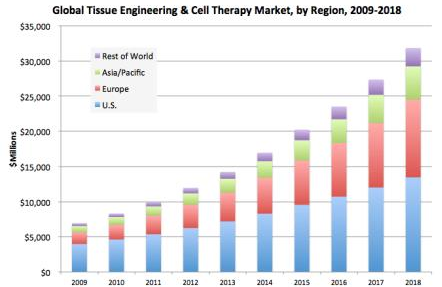
List of major Tissue Science Society worldwide:
- Australasian Society for Biomaterials and Tissue Engineering
- European Society for Artificial Organs
- European Association of Tissue Banks
- German Society of Anti-Aging Medicine
- International Federation for Artificial Organs
- Tissue Engineering and Regenerative Medicine International Society
- American Academy of Anti-Aging Medicine
- Tissue and Cell Engineering Society (TCES)
- Korean Tissue Engineering and Regenerative Medicine Society
- The Japanese Society for Tissue Engineering
Institutes Working On Tissue Science In Japan
The 6th International Conference and Exhibition on Cell and Gene Therapy (Cell Therapy 2017) hosted by Conference Series took place at Meliá Avenida America, C/O Juan Ignacio Luca de Tena, 3628027 Madrid, Spain during Mar 27-28, 2017.It was organized by Conference Series and generous response was received from the Editorial Board Members of our Supporting Journals as well as from eminent scientists, talented researchers, and young student community. Researchers and students who attended from different parts of the world made the conference one of the most successful and productive events in 2017 from Conference Series.
The program witnessed thought provoking keynote and plenary presentations from experts in the field of Cell Therapy, highlighting the theme, “Exploring the novel research and innovations in Cell & gene therapy”
The meeting was carried out through various sessions, in which the discussions were held on the following major scientific tracks:
- Cell Therapy
- Cell Science & Stem Cell Research:
- Tissue Science & Regenerative Medicine
- Gene Therapy
- Molecular Epigenetics
- Genetics & Genomic Medicine
- Clinical trials in cell and gene therapy
- Gene Editing Technology
- Regulatory, Safety and Ethical Issues Aspects in Cell & Gene Therapy
- Markets & Future Prospects for Cell & Gene Therapy
- Cell & Gene Therapy Products
And many more...
The highlights of the meeting were the keynote lectures from
- Falk Heinrichsohn, Aristoloft Ida, Portugal.
- Robert Deans, BlueRock Therapeutics, USA.
- Ricardo Baptista, Cell and Gene Therapy Catapult, UK
- Victor Nurcombe, IMB A*STAR, Singapore
We would like to acknowledge our sincere thanks and support to our honorable organizing committee members and session Chair Dr. Falk Heinrichsohn and moderator Dr. José Sánchez Del Río (Carlos III Madrid University, Spain) which resulted in smooth functioning of the conference.
Cell Therapy 2017 played an important role in promoting multidisciplinary interactions between science and medicine to enhance research in Cell and Tissue Science. The program covered current and emerging research innovations in the field of Cell and Tissue Science.
We are obliged to the various delegates from companies and institutes who actively took part in the discussions. We sincerely thank the Organizing Committee Members and Editorial board of Cell Therapy 2017 for their gracious presence and continuous support throughout the proceedings of this event.
With the valuable feedback and generous response received from the participants of the event, Conference Series would like to announce the commencement of ”11th World Congress on Cell & Tissue Science, May 09-1oth, Tokyo, Japan”.
Conference Highlights
- Tissue Engineering
- Cancer Cell Biology
- Biobanking
- Biological Tissue Substitutes
- Biomaterials and Bioengineering
- Bone and Cartilage Tissue Engineering
- Future of Cancer Care
- Cell Therapy
- Cell & Organ Regeneration
- Cell Engineering
- Dental Stem Cells and Tooth Regeneration
- Gene Therapy
- Immunology
- Novel Approaches in Guided Tissue Regeneration
- Organ Engineering
- Personalized Medicine
- Anti-Aging and Regenerative Medicine
- Stem cells
- Tissue Repair And Regeneration
- Translational Medicine
- Vitrification
- Tissue Culture & Preservation
- Epigenome and Epigenetic Analysis
To share your views and research, please click here to register for the Conference.
To Collaborate Scientific Professionals around the World
| Conference Date | May 09-10, 2018 | ||
| Sponsors & Exhibitors |
|
||
| Speaker Opportunity Closed | Day 1 | Day 2 | |
| Poster Opportunity Closed | Click Here to View | ||
Useful Links
Special Issues
All accepted abstracts will be published in respective Our International Journals.
Abstracts will be provided with Digital Object Identifier by








